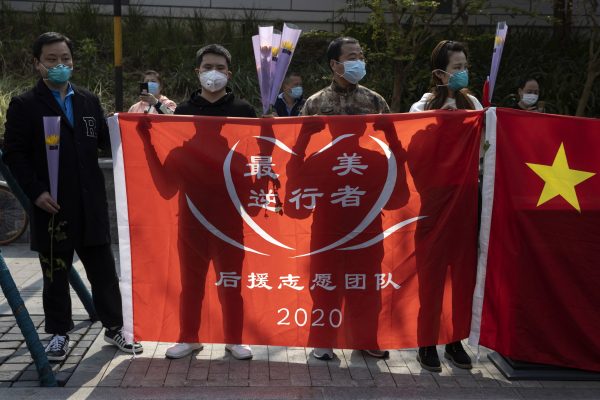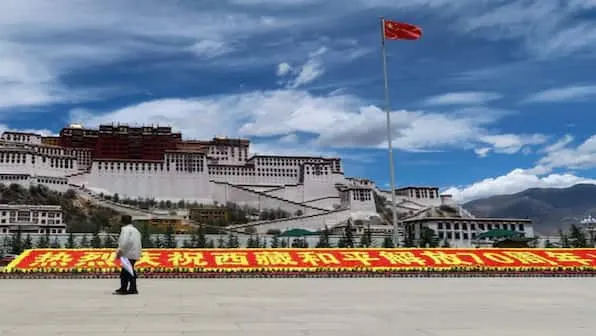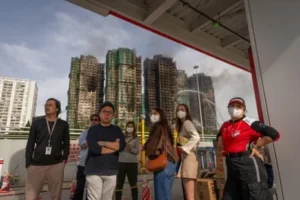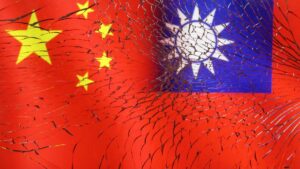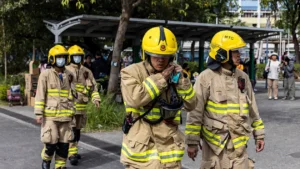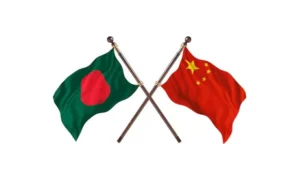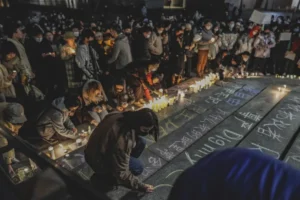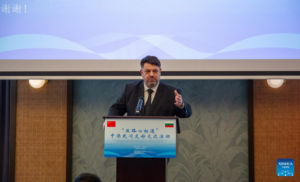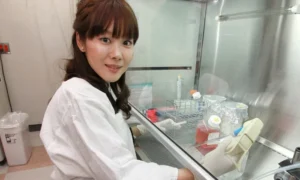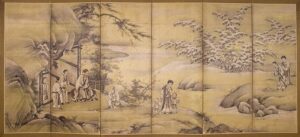How the Chinese State Mobilized Civil Society to Fight COVID-19
According to legend, the cradle of Chinese civilization was formed in the hands of the ancient King Yu (c. 2123-2025 BCE), whose greatest feat was rescuing the people from atrocious floods. He paid a hefty personal price in the form of calloused hands and long absences from family in order to save the kingdom from natural disaster. The Great Yu may have been no more a lore, but he symbolizes an enduring model of a benevolent and self-sacrificial ruler who rescued his subjects in the face of external shocks.
In responding to the COVID-19 disaster, Xi Jinping is no Great Yu. Instead of making personal sacrifices to fight the pandemic, he wielded the tried and tested tools of mass mobilization – calling upon the people to serve the state and each other. In some ways, this was reminiscent of John F. Kennedy’s inaugural address in which he urged fellow Americans to ask themselves what they can do for their country.
Yet, Xi’s call for 1.4 billion people to wage war against COVID-19 was unlike any routine beckoning for national unity in the face of calamity. Commanding a single party state, Xi was able to mobilize societal forces much like a helmsman directing his crew. Rocked by the waves and the maddening storm, there was no room or time for quibbling. Different societal groups may have differed in their approach and attribution of blame for the initial outbreak, but all acutely recognized the danger of COVID-19 for what it was – a potentially lethal virus that needed a collective effort to stymie.
Unlike many Americans who took to the streets in protest against what they perceived to be a political ruse, Chinese civil society responded as a corporate body. From state-run organizations to online groups to big business, nearly all elements of civil society moved swiftly into action. They donated money, organized food delivery, built health apps, and distributed masks and other equipment. Working in concert with government agencies, these various groups mobilized like various crew teams on a gigantic ship in peril.
Diplomat Brief Weekly Newsletter N Get briefed on the story of the week, and developing stories to watch across the Asia-Pacific. Get the Newsletter
China’s battle against COVID-19 was essentially a state-mobilized movement, which sounds like an oxymoron. Except that in many states across Asia and Eastern Europe, rulers have often initiated social movements as a means of rule. Such mobilization may be overt or covert, as in the case of Russian manipulation in the 2016 U.S. elections or the Chinese government’s toleration of certain episodes of anti-Japanese protests. In some cases, the hand of the government is disguised behind the appearance of autonomous NGOs and corps of “volunteers.” This latter, which appears to be genuine civil society on the outside, is actually doing the bidding of the government.
Enjoying this article? Click here to subscribe for full access. Just $5 a month.
In fighting COVID-19 the hand of the Chinese government was much more visible. After Wuhan officials’ initial botch-up in suppressing information about the virus, they sprang into action in concert with Beijing in January 2020. One of the first item of order was mobilizing teams of medical personnel, including doctors, nurses, and community leaders, who became frontline foot soldiers. The first batch of emergency medical teams arrived in the embattled city just one day after the lockdown started on January 24. Also that day, the National Health Commission dispatched teams from multiple hospitals in Guangdong, which each had temporary branches of the Communist Party embedded in them. Shortly afterwards, the Communist Youth League of Wuhan issued a public notice online and recruited over 7,000 volunteers in less than 12 hours. Donning red vests and matching armbands reminiscent of Mao-era teenage paramilitary guards, state-recruited volunteers got to work in neighborhoods and communities, delivering groceries and essential supplies. These volunteers often worked in concert with the state-led neighborhood committees and community grid management teams to knock on residents’ doors, checking each person’s temperature, registering returnees from Hubei province, and handing out educational pamphlets. These were the most visible of “volunteers” at the grassroots level. They are also the ones that are most closely aligned with state mobilization efforts.
The word and concept of “volunteerism” first came into vogue during the 2008 Wenchuan earthquake, in which up to 10 million citizens reportedly became volunteers in a flowering of civic participation. But during the SARS epidemic in 2002, the Chinese government had also relied on traditional Mao-style mass mobilization including village party branches, street subdistrict offices, and barefoot officers to track and quarantine people. In the processes of learning to respond to national disasters, Chinese officials and people alike came to be familiar with a once-foreign concept of “volunteerism” and civic engagement. In the Hu Jintao era, local governments regularly partnered with social organizations to provide needed social services.
When COVID-19 struck in 2020, the Party-led civil society was ready to be called into action. This civil society under Xi Jinping bears distinct characteristics. For one, it was accompanied by a surge of spontaneous online activism. For instance, online celebrity fan groups composed largely of women in their twenties followed their idols in acts of charity. The 13.7 million followers on Weibo (Chinese Twitter) of Yuchun Li, a mega-popstar “supergirl,” donated over a million yuan (more than $154,000 dollars) to residents in Hubei and also mobilized for supplies to be distributed to Wuhan hospitals. The People’s Daily hailed the popstar as a “representative of the year” in a video on its social media platform. In addition to the charitable enthusiasm of celebrity fans, grassroots feminist groups also sprang into action, distribution menstrual supplies to essential workers in Wuhan hospitals. So too, did informal friendship groups both inside China and in the diaspora, who organized the ad hoc delivery of medical supplies and donations to the afflicted regions.
Mega-corporations also pulled their weight. While corporate giving is common, Chinese businesses understand that in order to thrive, they must align themselves with the Communist Party’s agenda. Through the Jack Ma Charity Fund, the e-commerce giant Alibaba donated $14 million toward vaccine development and developed one of the first color-coded QR health systems adopted widely to track the spread of the virus. In addition, the party praised SF Express for its cooperation in combating the virus by delivering supplies and providing free transport. Smaller businesses also joined in the effort, with restaurant owners providing free meals to volunteer medical workers.
All of this points to the resurgence of party-led civil society in the wake of COVID-19 and its aftermath. The key word here is party-led. At the same time that Chinese Communist Party is unleashing and encouraging these civic groups to join in the fight against the pandemic, it has also been heavy-handed in repressing grassroots civil society. In the previous Hu era, grassroots civil society, including NGOs, critical journalists, human rights lawyers, and religious leaders could survive in a legal gray zone. They survived at times by providing social services to the state and at other times by “mobilizing without the masses,” through disguising collective action behind a façade of individual challenges to the state.
That era is no more. Under Xi, grassroots civil society in China has been throttled by a combination of repression and restrictive laws for international NGOs that provided both resources and support for these groups. The passing of the National Security Law in Hong Kong also does not bode well for mainland civil society groups. It may too early to assess what the long-term impact of COVID-19 has been on these advocacy groups. One thing is for certain: the COVID-19 crisis pushed to the frontlines a civil society that is mobilized and led by the Chinese Communist Party, whether directly or indirectly.
In one version of the ancient flood story, the Great Yu was aided by mystical animals – a yellow dragon and a black turtle – in devising a remarkable network of irrigation canals diverting flood waters into farmers’ fields. In China today, the yellow dragon may as well be the Chinese Communist Party, while the black turtle may be the state-approved civil society. Together, they rescued the nation from a deadly pandemic and even catapulted GDP growth into the positive. Or at least that’s what Beijing’s propaganda would have us believe.
Diana Fu is an associate professor in the Department of Political Science and the Munk School of Global Affairs and Public Policy at the University of Toronto. She is author of “Mobilizing Without the Masses in China.”
